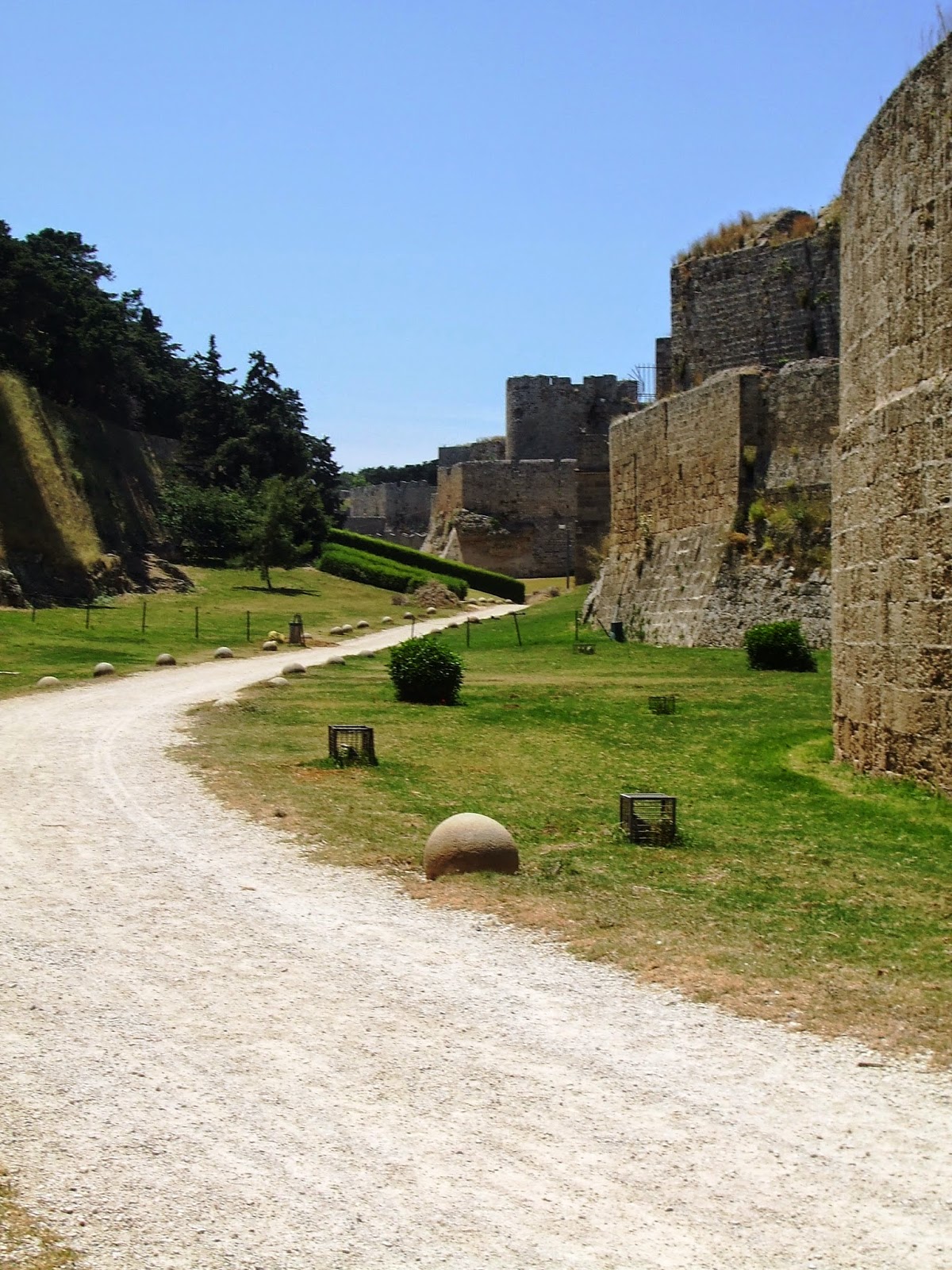Yes, a long planned family holiday to the sunny Mediterranean. I had heard very good things about the town walls of the old city and when asked for a destination for our holiday had suggested the island of Rhodes and was quite surprised when it was taken up. Plenty of internet 'surfing' beforehand had whetted my appetite for having a closer look at the fortifications, but however good the photos, nothing can compare with experiencing the real thing.
I started my walk at the eastern end of the moat by the Akandia Gate; the first major major work being the Caretto Bastion.
This is one of the more modern designs to accommodate artillery and guns from here would command this section of the moat. As I strolled along, I struggled to come to terms with the scale of the works
The town walls are on the right (this section was the responsibility of the 'Tongue' of Provence), on the left can be seen the outer wall of the moat, easily 20 feet high. Further along is the St John's Bastion and the beginning of the walls lying within the responsibility of the Tongue of England.
Along this section and that of the Aragonese are outworks protecting the actual city walls. The photo above shows the scale of these outworks. The city walls are on the right with square towers providing flanking fire. In this section there are now two dry moats.
Here is the access to the St Athanassios Gate, illustrating the depth of the moat. Small bastions project into the moat, covering potential blind spots and giving yet more opportunities for flanking fire.
The Gate D'Amboise is one of the most impressive entrances to the old town and is of a later design, allowing for the placing of artillery on the roof of the towers.
Just beyond the gate is a feature allowing for the placing of a flanking battery. This projects from the walls and would sweep the moat close to the Gate D'Amboise.
Whilst on Rhodes we found time to visit the Acropolis at Lindos, where a site which had been used as a fortress in Classical times was used again by the Byzantines and the Knights of St John. The remains of the castle are impressive, as is the view from the summit along the coast.
Here you can see the steps leading up to the entrance to the castle. These are reached only after having passed through a gatehouse and climbed up to a platform.
There are other castles on Rhodes, particularly Kritinia and Monolithos on the western coast, but I didn't manage to visit them.
Back to the usual routine now, although, with less than a fortnight to the Phalanx show at St Helens we need to get the Hedgeley Moor game finalised.
Almansa 1707
24 minutes ago








No comments:
Post a Comment